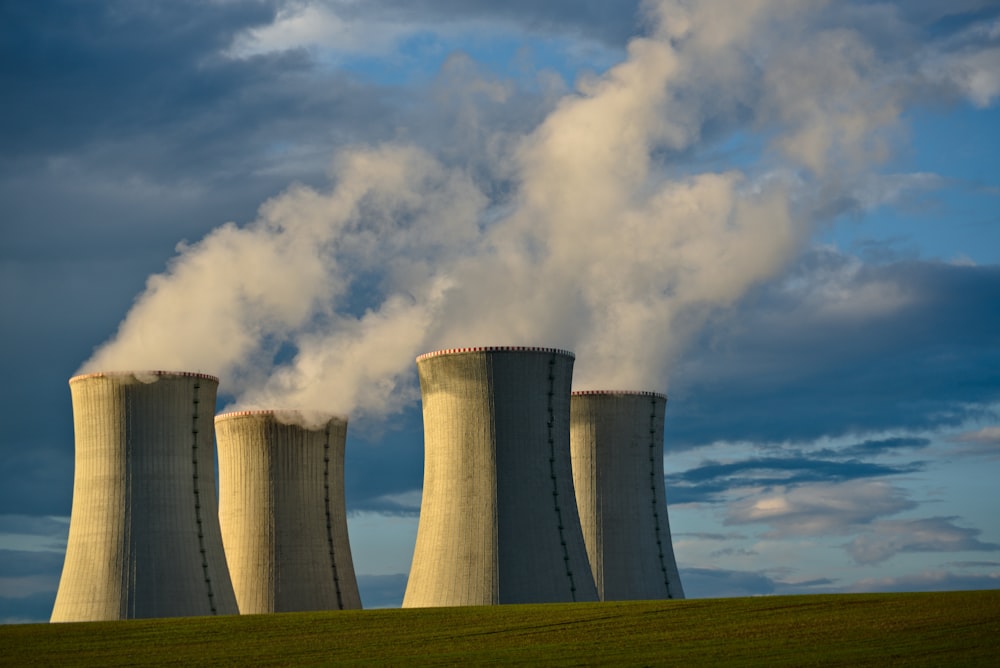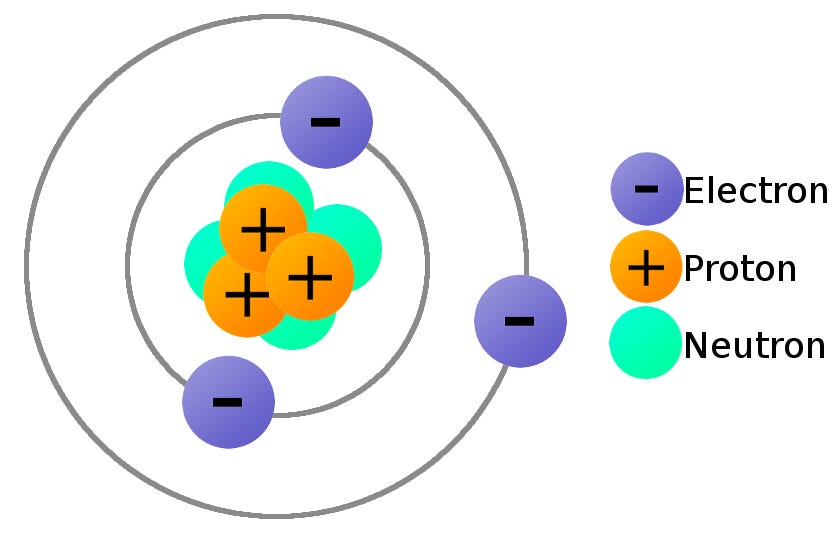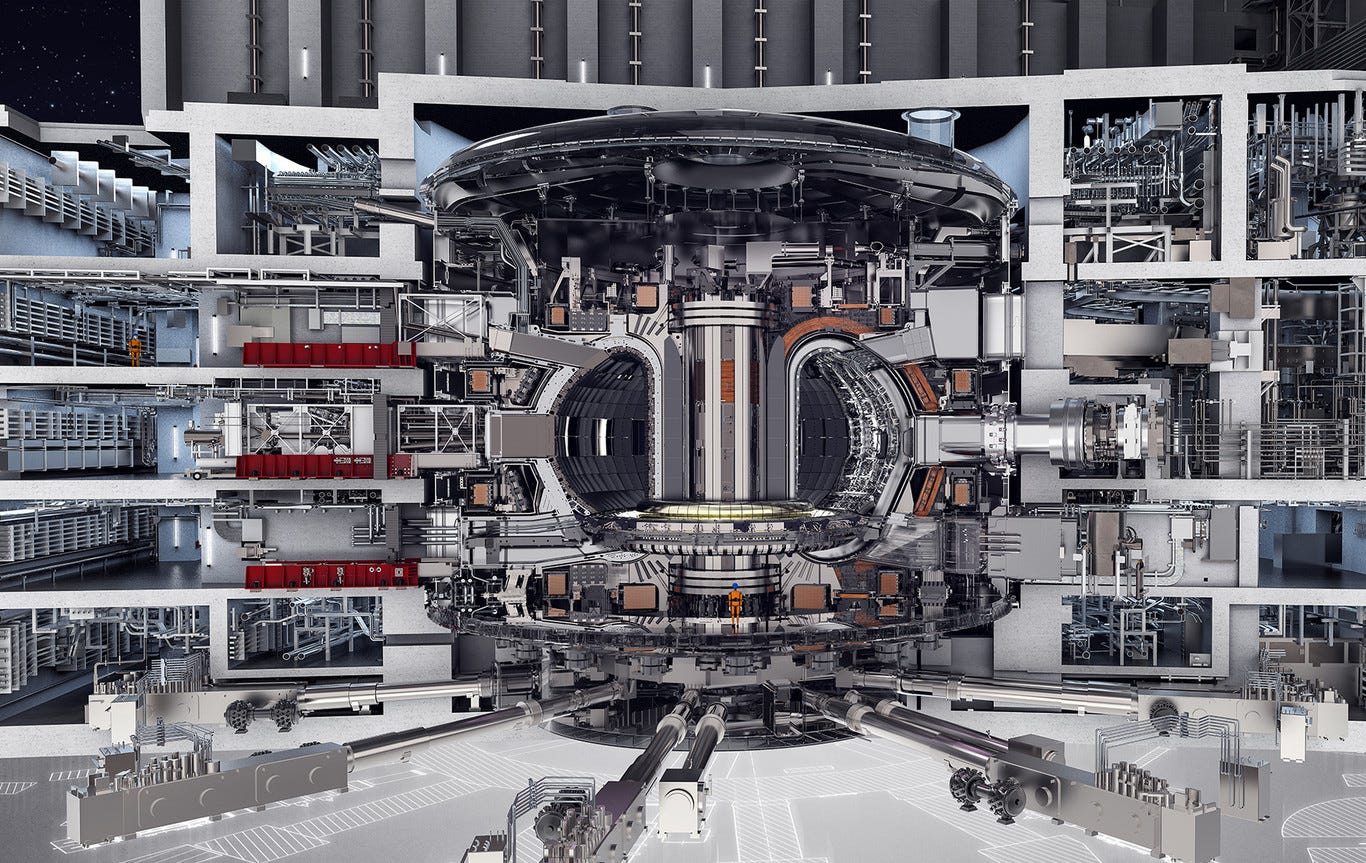⚛️an atomic revolution: nuclear fusion
more energy = more progress, and nuclear fusion might be the solution
hey! welcome to my newsletter.🌿 in case you do not know me: i’m mafer, an 18-year-old peruvian incoming freshman at stanford university, climate tech enthusiast and boba tea connoisseur. i’m very glad to have you here.
energy is the bound of civilization. it is known that cheap and abundant energy leads to economic prosperity as it does not only give access to basic needs, but improves overall wellbeing (in fact, there is a direct bidirectional relationship between energy consumption and economic growth!). the problem, though, is that our society has developed an energy production system that damages our environment. and even in the ideal scenario where fossil fuels didn’t harm the environment, they would eventually run out anyways.
so, we are now on the same page: another approach is needed. but which one should we prioritize? in this newsletter, i inform you about one possible (of multiple) solutions: nuclear fusion.
😲what? is it an explosion?
not quite. nuclear fusion happens when 2 light nuclei merge to form a single nucleus, releasing energy as the total mass is less than the mass of the 2 original nuclei. simple idea, right? if you know a bit of physics we can then explain it with the famous equation:
e = mc^2
the equation reflects how a very small amount of mass may be converted into a very large amount of energy —i know, the magic of exponents. let’s also see it through a brief calculation:
e = 1kg * (3 x 10^8 m/s)^2
e = 1kg * 9 x 10^16 m^2/s^2
e = 9 x 10^16 joules
but, maybe (just maybe), 9 x 10^16 joules may seem meaningless to you. but worry none! we can also translate physics in more day-to-day terms. new york city, concretely, consumes almost 60 billion kilowatt hours of electricity per year. that means that 216 x 10^15 joules of electrical energy is used per year. so, with the previous calculation, 1 kilogram of mass could power new york city for, roughly, 5 months. unbelievable.
⚡how is this possible?
imagine you have a tiny, super-duper small particles (atoms). these atoms are the building blocks of everything that surrounds us. now, inside these atoms, there are even tinier parts called protons and neutrons.
structure of the atom.
the general idea is that atoms get so hot and energetic that their outer layers of negatively charged electrons (which is the intial reason why atoms first repel each other) get stripped away. this creates a hot and dense core where protons and neutrons are squeezed really close together. they keep getting closer until the strong force that holds atomic nuclei together is stronger than the electric repulsion between positively charged protons, allowing the nuclei to fuse.
the combined nucleus is udually heavier than the two original nuclei, and the extra mass gets then converted into energy according to e=mc^2. this is a tremendous amount of energy, which is forseen to be used as a potential clean and almost limitless power source.
⚠️and… is that it?
unfortuntately, no solution to such a complex problem is ever that simple. to partake this process, we need incredibly high temperatures and pressures to make the atoms collide forcefully enough to finally fuse. there is also the challenge of plasma confinement, as sustaining the necessary conditions can lead to instabilities in this plasma. if the plasma touches the walls of the containment device, it can cool down and disrupt the fusion process immediately (no, it doesn’t explode).
fusion reactors also use, typically, hydrogen isotopes (e.g. deuterium and tritium) as fuel. tritium in particular is radioactive and has relatively short half-life, which means it needs constant replenishment. hence, it still remains a challenge to find a reliable and safe supply of fusion fuel.
we also cannot talk about technology without the economic side. in fact, building and operating a fusion reactor is a massive task that requires significant investment. developing the technology to a point where it becomes economically viable and scalable for widespread energy production and take advantage of economies of scale can be a challenge, specially with the polarization of opinions regarding nuclear fusion.
🗣️more about polarized opinions
previous accidents have a psychological effect. serious nuclear power disasters, such as the fukushima nuclear disaster (2011), the chernobyl disaster (1986) and the three mile island accident (1979) are, sometimes, the worst case scenario imagined when talking about nuclear energies. nevertheless, it is relevant to discover the death rates per unit of electricity production to assess which energy production is actually more harmful to human lives.
the actual data shows how the neglect of nuclear fusion as a solution is rooted on fear (something known, in economic terms, as availability bias) when, in reality, it is fossil fuels that actually create more deaths when producing electricity. nuclear energy is almost the last one in the list. it is also interesting to note how we can get more radiation form a typical dose received during a flight from new york to tokyo than from living within a few km of an operating power plant. putting things into perspective, nuclear fusion could be the next big thing.
though, it is also important to highlight that the previously stated accidents were caused by nuclear fission, which involves a chain reaction. fusion reactions require extremely precise conditions to occur, and they do not lead to uncontrollable chain reactions like fission reactions can. so rest assured that, in the need of sustainable and massive energy production mechanisms, there is a significantly reduced risk of catastrophic accidents. in fact, even if there is a failure in the system, the reaction just stops. no explosion, not anything. it needs such specific environmental conditions that there are minimal risks of unwanted consequences.
📰the landscape now: current news on nuclear
currently, a wide range of approaches to fusion exist. just to name a few, we have:
orbitrons
pulsed high density aneutronic fusion
plectonemic reconnection
plasma jet driven margento inertial fusion
hypervelocity gradient field fusion
muon-catalyzed fusion with high-density fuel
and yes, i just named some fancy names out there (in case you want to look more into them!) but one method i do want to highlight is aneutronic fusion. as its name says, it is a method that uses fuels such as proton-boron-11 or deuterium-helium-3 to produce energy but does not produce neutrons. this would help directly convert the energy form plasma into electricity, while also producing little to no ionizing radiation. thus, it is considered slightly safer than deuterium-tritium fusion and other forms of hydrogen fusion.
different startups are trying combinations of all the above, mixing and matching approaches to see what will work best depending on their objective: massive electricity generation, or small and portable energy for transportation.
as an example, in the research sprint of ari global, we had to delve into a specific startup and their advances on nuclear fusion. thus, i will exemplify to you what we pitched: iter.
iter is a research project started by the soviet union, the u.s., the e.u. and japan to immerse into magnetic fusion. this then developed into a business model in 2006 when the project was officially started. until now, they have raised over 22 billion USD to continue developing the project.
so, how does this work?
iter uses magnetic confinement fusion that uses magnetic fields to contain the fusion fuel in plasma form. to do this, the tokamak (which is the object we can see in the middle of the picture) has 3 powerful electromagnets (to spark and control the plasma) and a central solenoid.
we can break down the process in simple steps. imagine you are the one doing the process!
feed electric current through the outer coils. this creates magnetic fields that will later help you shape the plasma.
next, gradually increase the current through the central solenoid to make the magnetic field grow
then, add a few grams of deuterium and tritium. they will be heated by a strong pulse of microwaves. this makes them break down into smaller particles, becoming plasma.
QUICK! reduce the central solenoid current! this is to reduce the magnetic field to then cause a current in the plasma via electromagnetic force.
repeat. the tokamak will maintain the plasma’s current by constantly increasing and decresing the current, thus the magnetic field
keep going until deuterium and tritium ions have rough energy to collide and form helium, releasing huge amounts of energy. and that’s it! you achieved nuclear fusion!
if you want a more visual description of how the tokamak works, here is a very comprehensive video from oak ridge national laboratory, which explains in further detail (and with images) the 6 steps above:
nuclear fusion is compelling by its lack of long-lived radioactive waste (unlike nuclear fission), its minimal risk of meltdowns, its safety in comparison to other energy production processes, and limited supply concerns (i mean, hydrogen isotopes are literally everywhere). it is also more energy dense than fossil fuels, environmentally friendly, and even self-sustainable once they achieved ignition. and amidst climate crisis, we need 10x solution making and nuclear fusion is a compelling contender, if further developed.
🔜so what now?
we should shift the argument from consuming less energy to the call for energy superabundance. instead of satisficing with current energy production technologies, we must aim to produce unimaginable amounts of clean energy from all the sources we can. with that, we would not only limit greenhouse gas emissions but also improve the life quality of millions of people.









